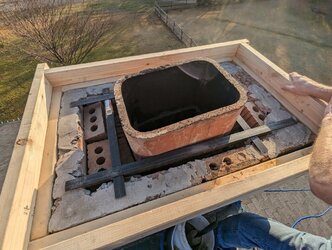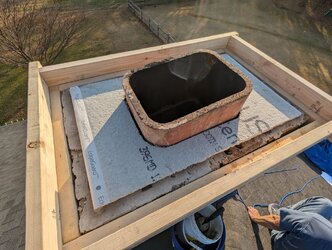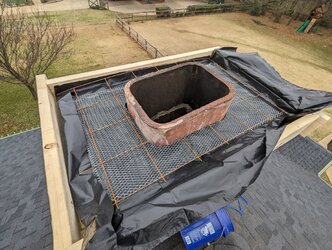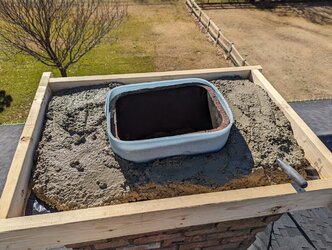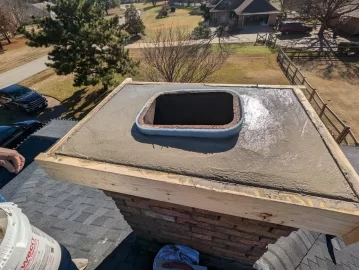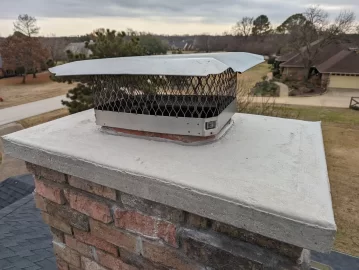Decided to tackle this prior to cold weather this year. Recently cleaned the chimney and hated the busted up crown. No good companies I can find close, so decided to do it myself.
Starting point:
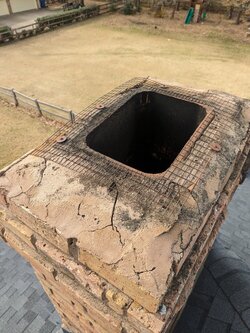
Removed mortar and top layer of brick to allow for a thicker crown and flue tile exposure:
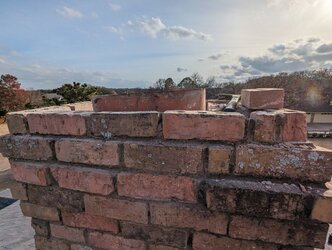
Day 1 Progress:
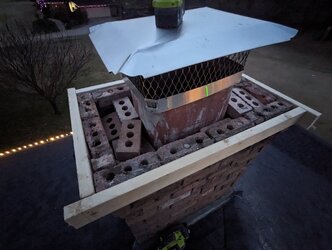
Adding some mortar to reinforce my new top layer and to better support crown support structure:
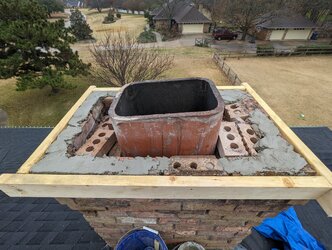
My plan is to use floating angle iron / cement board to create the base for the crown. I'll use 2x6's around the 2x4's for the form and leave a couple inches of flue tile exposed on top. I will provide room for expansion around the tile.
I might use a line of caulk on the 2x4's for my drip edge, or just come back after with a grinder and notch under the 1.5" overhang.
Starting point:

Removed mortar and top layer of brick to allow for a thicker crown and flue tile exposure:

Day 1 Progress:

Adding some mortar to reinforce my new top layer and to better support crown support structure:

My plan is to use floating angle iron / cement board to create the base for the crown. I'll use 2x6's around the 2x4's for the form and leave a couple inches of flue tile exposed on top. I will provide room for expansion around the tile.
I might use a line of caulk on the 2x4's for my drip edge, or just come back after with a grinder and notch under the 1.5" overhang.
Last edited by a moderator:


